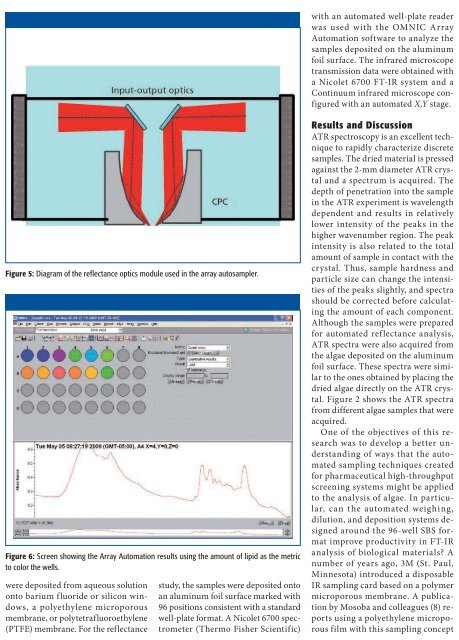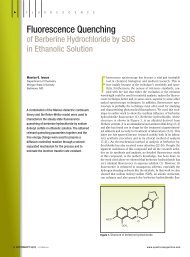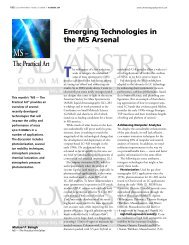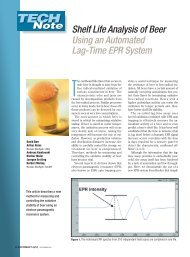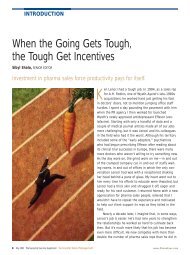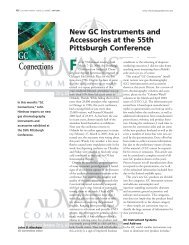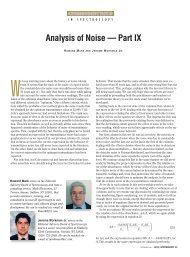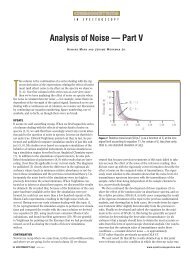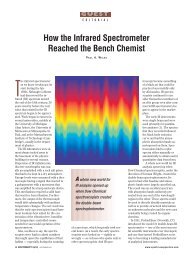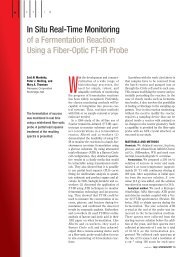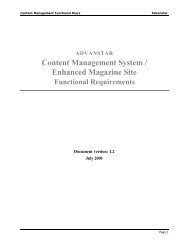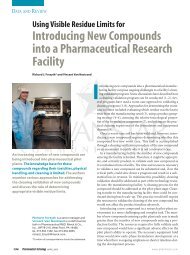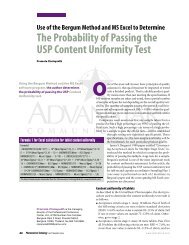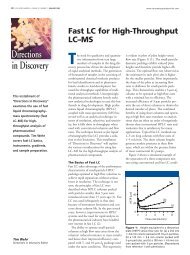Experimental - Spectroscopy
Experimental - Spectroscopy
Experimental - Spectroscopy
Create successful ePaper yourself
Turn your PDF publications into a flip-book with our unique Google optimized e-Paper software.
34 <strong>Spectroscopy</strong> 26(6) June 2011 www.spectroscopyonline.com<br />
with an automated well-plate reader<br />
was used with the OMNIC Array<br />
Automation software to analyze the<br />
samples deposited on the aluminum<br />
foil surface. The infrared microscope<br />
transmission data were obtained with<br />
a Nicolet 6700 FT-IR system and a<br />
Continuum infrared microscope configured<br />
with an automated X,Y stage.<br />
Figure 5: Diagram of the reflectance optics module used in the array autosampler.<br />
Figure 6: Screen showing the Array Automation results using the amount of lipid as the metric<br />
to color the wells.<br />
were deposited from aqueous solution<br />
onto barium fluoride or silicon windows,<br />
a polyethylene microporous<br />
membrane, or polytetrafluoroethylene<br />
(PTFE) membrane. For the reflectance<br />
study, the samples were deposited onto<br />
an aluminum foil surface marked with<br />
96 positions consistent with a standard<br />
well-plate format. A Nicolet 6700 spectrometer<br />
(Thermo Fisher Scientific)<br />
Results and Discussion<br />
ATR spectroscopy is an excellent technique<br />
to rapidly characterize discrete<br />
samples. The dried material is pressed<br />
against the 2-mm diameter ATR crystal<br />
and a spectrum is acquired. The<br />
depth of penetration into the sample<br />
in the ATR experiment is wavelength<br />
dependent and results in relatively<br />
lower intensity of the peaks in the<br />
higher wavenumber region. The peak<br />
intensity is also related to the total<br />
amount of sample in contact with the<br />
crystal. Thus, sample hardness and<br />
particle size can change the intensities<br />
of the peaks slightly, and spectra<br />
should be corrected before calculating<br />
the amount of each component.<br />
Although the samples were prepared<br />
for automated reflectance analysis,<br />
ATR spectra were also acquired from<br />
the algae deposited on the aluminum<br />
foil surface. These spectra were similar<br />
to the ones obtained by placing the<br />
dried algae directly on the ATR crystal.<br />
Figure 2 shows the ATR spectra<br />
from different algae samples that were<br />
acquired.<br />
One of the objectives of this research<br />
was to develop a better understanding<br />
of ways that the automated<br />
sampling techniques created<br />
for pharmaceutical high-throughput<br />
screening systems might be applied<br />
to the analysis of algae. In particular,<br />
can the automated weighing,<br />
dilution, and deposition systems designed<br />
around the 96-well SBS format<br />
improve productivity in FT-IR<br />
analysis of biological materials? A<br />
number of years ago, 3M (St. Paul,<br />
Minnesota) introduced a disposable<br />
IR sampling card based on a polymer<br />
microporous membrane. A publication<br />
by Mosoba and colleagues (8) reports<br />
using a polyethylene microporous<br />
film with this sampling concept


